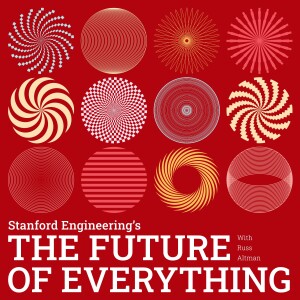
Simone D’Amico: “The Swarm” is coming to an orbit near you
 2020-02-13
2020-02-13
The geostationary satellites used for communication and weather forecasting today are very large and very expensive — and most are still functioning perfectly when they must be disposed of because they run out of fuel. In their place, Stanford astronautics professor Simone D’Amico imagines an new era of smaller, less expensive, more efficient satellites that work in tandem to accomplish things their bigger brethren never imagined. He calls it distributed space systems — formations or “swarms” of small satellites.
Distributed space systems have breakthrough applications in earth and planetary science, astronomy, and astrophysics, as well as in-orbit servicing and space infrastructure. One task D’Amico foresees for what he calls “The Swarm” is a sort of janitorial role. These “garbage trucks in space” would remove, repair or refuel the thousands of unused satellites orbiting the earth. He says The Swarm could also improve our knowledge of the Sun and its interaction with the upper layers of the atmosphere, leading to better space weather predictions or achieve other important scientific objectives — like detecting life on other planets.
Before this space age can be made real, however, D’Amico and his compatriots in astronautics must figure out how to control these distributed space systems with the required precision in safety, and help develop a new set of “galactic” rules to make space traffic sustainable in the long run.
Join host Russ Altman and astronautics professor Simone D’Amico for a look at “The Swarm” — the changing face of satellites in space — on the latest episode of The Future of Everything.
Connect With Us:
Episode Transcripts >>> The Future of Everything Website
Connect with Russ >>> Threads or Twitter/X
Connect with School of Engineering >>> Twitter/X
More Episodes
 2020-12-10
2020-12-10
 2020-11-18
2020-11-18
Create your
podcast in
minutes
- Full-featured podcast site
- Unlimited storage and bandwidth
- Comprehensive podcast stats
- Distribute to Apple Podcasts, Spotify, and more
- Make money with your podcast
It is Free
- Privacy Policy
- Cookie Policy
- Terms of Use
- Consent Preferences
- Copyright © 2015-2024 Podbean.com




